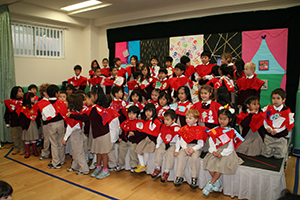 Jasmine sat on her living room floor covered in fake gorilla fur. She sneezed — twice. What she really wanted to do, though, was cry as she held a crumpled sheet of music in her right hand, and a very incomplete costume in the other. In less than a week, she had to play a song on the recorder – only she didn’t know how to read music. She also had to sew a gorilla costume for her son. Jasmine managed to cut the material according to the pattern she was given. But that chore had been so exhausting that she still had not taken her sewing machine out of its box and learned to use the darn thing. She had no option but to finish her tasks or risk condemnation of being a Bad Mother.
Jasmine sat on her living room floor covered in fake gorilla fur. She sneezed — twice. What she really wanted to do, though, was cry as she held a crumpled sheet of music in her right hand, and a very incomplete costume in the other. In less than a week, she had to play a song on the recorder – only she didn’t know how to read music. She also had to sew a gorilla costume for her son. Jasmine managed to cut the material according to the pattern she was given. But that chore had been so exhausting that she still had not taken her sewing machine out of its box and learned to use the darn thing. She had no option but to finish her tasks or risk condemnation of being a Bad Mother.
Jasmine is an Australian woman with a degree in economics and a former career in finances. When she moved to Tokyo after marrying her Japanese husband, she fervently studied the language and adapted to the culture. According to traditional Japanese protocol, she stopped working after the birth of her son to be a Good Mother. When her son turned three and enrolled in preschool, Jasmine expected some free time. Instead, she found life as a Japanese preschool mother to be the greatest challenge of her life.
 Her son entered a preschool with an 80-year history. The founder strongly believed that it is vital to build up the bodies, the hearts and the minds of children when they are young because “the spirits of children at three last until they are one hundred.” In the winter, children would build up their immune system by running marathons wearing only undershirts and shorts. Inside the classrooms, knowledge would be crammed into their little brains as they memorize famous proverbs written in complex characters. A respect of nature would be instilled in the hearts of children by getting them to take care of plants and small animals. A four-day camping trip would teach kids – some still five years old – about nature and wilderness survival before entering elementary school.
Her son entered a preschool with an 80-year history. The founder strongly believed that it is vital to build up the bodies, the hearts and the minds of children when they are young because “the spirits of children at three last until they are one hundred.” In the winter, children would build up their immune system by running marathons wearing only undershirts and shorts. Inside the classrooms, knowledge would be crammed into their little brains as they memorize famous proverbs written in complex characters. A respect of nature would be instilled in the hearts of children by getting them to take care of plants and small animals. A four-day camping trip would teach kids – some still five years old – about nature and wilderness survival before entering elementary school.
Jasmine explained why she chose this particular school. “The most popular preschool in the neighborhood seemed so superficial. They had fancy school uniforms, new playroom equipment but the boys seemed mean and the girls petty. The kids at the public preschool played happily but the school won’t take kids until they’ve turn four. So we decided on this preschool because, despite the extreme programming, the kids never look tired. They always seemed enthusiastic to take on new projects. Even at such a young age, they played and worked well together.” The school had warned Jasmine that parental commitment to the school’s program was expected. But little did she know at the time that her son’s success at the school would hinge on her non-existing talents in music and sewing.
More than any other country, Japan has a distinct definition of what a “good mother” is. In 1911, during the Meiji Period, a concept called “ryosai kenbo” (good wife, wise mother) was introduced by the state. School textbooks outlined the importance of women to be educated in managing household finances and supporting the academic studies of her children. By tending to every trivial need of her family with loving effort, a woman’s husband and children could then concentrate on achievements outside the home. Their contribution to society would be a direct reflection of the woman as the the ideal of a “good wife and wise mother.”
Until the advent of this policy, children were considered property of households and were raised by their grandparents. Young brides had to work hard labor in the fields or put in long hours at the family business. Schooling for children was not a high priority as they too were urged to work as early as possible.
However, the Meiji government wanted a well-educated population to carry out rapid industrial reforms. They instilled an official policy for mothers to be the main caregiver of children and to encourage them to study rather than work for the family. Young brides quickly embraced this new role because it was an elevation of status. No longer were they just needed only for childbirth – they were important in the household to raise children properly. It is ironic that today’s Japanese mothers feel oppressed by having to take care of their families’ every need when it was actually liberating for mothers in the Meiji Period to do so. Preschools also have a much higher status in Japan than elsewhere because they were established during this same period to “teach” mothers about how to raise children. Preschools today assume they have to “educate” mothers.
One Japanese friend told me about the time when the principal emeritus of her daughter’s preschool decided to call an emergency meeting. The pressing issue? That mothers did not include enough fish into their children’s lunches. “I know how everyone makes attractive meals for your children but THAT IS NOT ENOUGH! Some of you put in salted salmon, but THAT IS NOT ENOUGH! Children today are eating too much meat. They MUST EAT MORE healthy fish like mackerels,” the principal thundered. “She was so old and frail, I thought she would have a heart attack during the speech,” my friend commented.
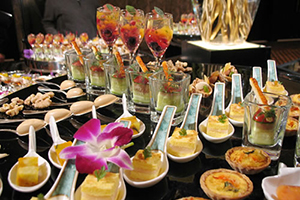 While Japanese mothers do not take these Meiji era childraising “tips” seriously, they also do not bother rebelling. Under such conditions, a foreign mother has no choice but to comply.
While Japanese mothers do not take these Meiji era childraising “tips” seriously, they also do not bother rebelling. Under such conditions, a foreign mother has no choice but to comply.
The Shaon Kai is the last major event for a child’s school life. Literally meaning “the gratitude and respect meeting,” it is a farewell party to show appreciation for teachers when children graduate from a school at any level. Typically, preschool Shaon Kai parties tend to be more elaborate. There is sincere gratitude to the patience of preschool teachers who take untamed three-year-old creatures and form them into functioning little human beings.
Integral to the Shaon Kai are performances called “odashimono.” The concept is not unlike the ritual of friends singing at a wedding, a performance being a “gift” to the people honored. At schools like the one Jasmine’s son attended with a strong emphasis on achievement, Shaon Kai performances are extravaganzas. Not only do children provide the gift of putting on a play, mothers express their gratitude by practicing long hours for their artistic show.
Held at a hotel banquet room, the Shaon Kai Jasmine attended cost ¥30,000 per family, which included room rental, meals for both parents and the child, and presents for the teachers. Dress was formal and many mothers wore kimonos.
The jungle theme of the play that year required that Jasmine sew a gorilla costume for her son. Mothers had three choices. One group would do a traditional Japanese dance. Another group would write and perform a “rakugo” story. With very little exposure to traditional Japanese arts, Jasmine had little choice but to sign up for the orchestra. She soon confessed to a mother in charge that she didn’t really remember how to read music. Looking clearly upset, “Um, that is a problem,” she said with a frown. Fortunately, there were two other mothers as musically inept as Jasmine. Together they formed a recorder trio to play “Wings to Fly,” a traditional graduation favorite. The music director approved of the choice because the melody sounded quite nice even on a simple instrument.
The play turned out quite well. Despite sweating inside the gorilla costume, Jasmine’s son did not choke from shedding gorilla fur as she feared. All the performances, including the recorder recital, turned out spectacular. “I’ll never forget this experience. I managed to learn these new skills in such a short time. No regrets, but never again!”
At elementary schools, especially public ones, the Shaon Kai is usually not that time-consuming. There are still three or four mothers in the committee. Mothers still have to sing a song, and sometimes even a public hall is rented out. In many cases, it is held in the multi-purpose room of the school, where nicer-than-usual meals are ordered, students give thank you speeches and teachers accept flowers and a signed photo album. Costs for the event run around 5,000 yen and paternal participation is not required.
But even at the same school, depending on the mothers in charge that year, how elaborate a Shaon Kai varies a great deal. Some mothers luck out when their children’s teachers boycott their own parties. Indeed, there are teachers who feel that it is not necessary for mothers to spend time organizing a farewell party.
At one elementary school, there is a very popular teacher who takes the graduating class to an amusement park or to a movie instead of having a Shaon Kai. There is nothing for mothers to prepare. But most teachers do seem to enjoy being “honored” for a day. Mothers can finally breathe a sign of relief when their children enter junior high, though. From that time on, students arrange their own Shaon Kai.
Story by Carol Hui
From J SELECT Magazine, March 2010

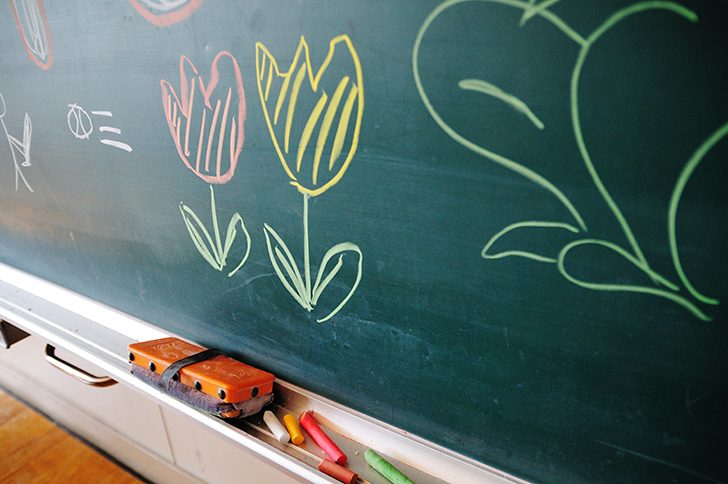




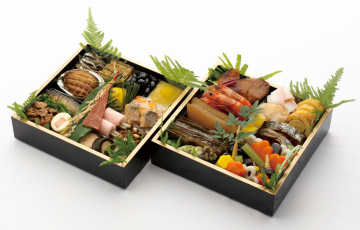




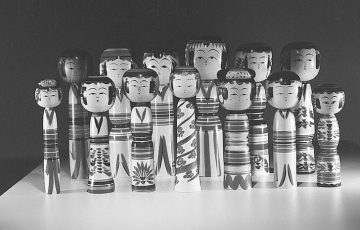



Recent Comments